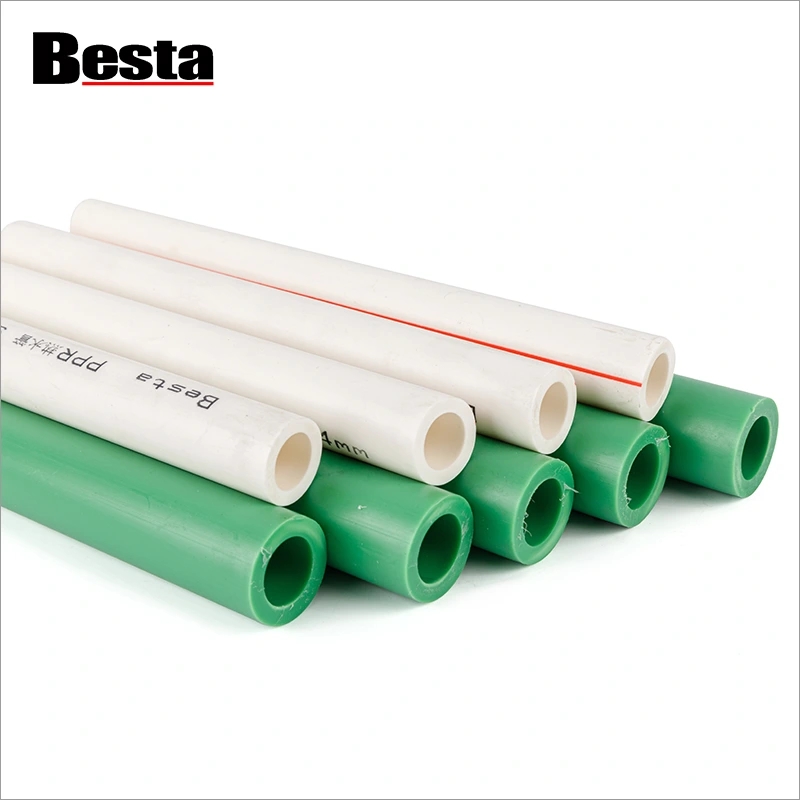- English
- Español
- Português
- русский
- Français
- 日本語
- Deutsch
- tiếng Việt
- Italiano
- Nederlands
- ภาษาไทย
- Polski
- 한국어
- Svenska
- magyar
- Malay
- বাংলা ভাষার
- Dansk
- Suomi
- हिन्दी
- Pilipino
- Türkçe
- Gaeilge
- العربية
- Indonesia
- Norsk
- تمل
- český
- ελληνικά
- український
- Javanese
- فارسی
- தமிழ்
- తెలుగు
- नेपाली
- Burmese
- български
- ລາວ
- Latine
- Қазақша
- Euskal
- Azərbaycan
- Slovenský jazyk
- Македонски
- Lietuvos
- Eesti Keel
- Română
- Slovenski
- मराठी
- Srpski језик
The difference between PPR cold and hot water pipes
PPR (Polypropylene Random) water pipes are a commonly used polymer material pipe, widely used in cold and hot water systems. PPR pipes have become the main force in water pipe materials due to their excellent high-temperature and pressure resistance performance. There are significant differences between PPR cold water pipes and hot water pipes, mainly reflected in the following aspects:
Appearance identification: PPR hot water pipes are usually marked with a red line, while cold water pipes are marked with a blue line to distinguish their purpose.
Wall thickness and pressure resistance: The wall thickness of hot water pipes is usually thicker than that of cold water pipes to meet higher temperature and pressure requirements. The pressure resistance level of hot water pipes is generally above 2.0Mpa, while the pressure resistance level of cold water pipes is generally between 1.25 and 1.60Mpa.
Temperature tolerance: PPR hot water pipes can withstand temperatures up to 95 degrees Celsius, with an instantaneous operating temperature of up to 110 degrees Celsius, while the operating temperature of cold water pipes should not exceed 45 degrees Celsius to avoid aging and cracking.
Raw material difference: The hot water pipe is made of copolymer PP-B material, which has good thermal stability and mechanical properties, while the cold water pipe is made of homopolymer PP-R material, which may cause deformation and strength reduction when used at high temperatures.
Price: Due to the higher requirements for wall thickness and pressure resistance of hot water pipes, their prices are usually higher than those of cold water pipes.
Usage: PPR hot water pipes are mainly used for hot water systems in buildings, while cold water pipes are used for general water pipe use.
The choice of PPR cold water pipe or hot water pipe should be determined based on specific usage needs and environmental conditions to ensure the safety and durability of the system.






